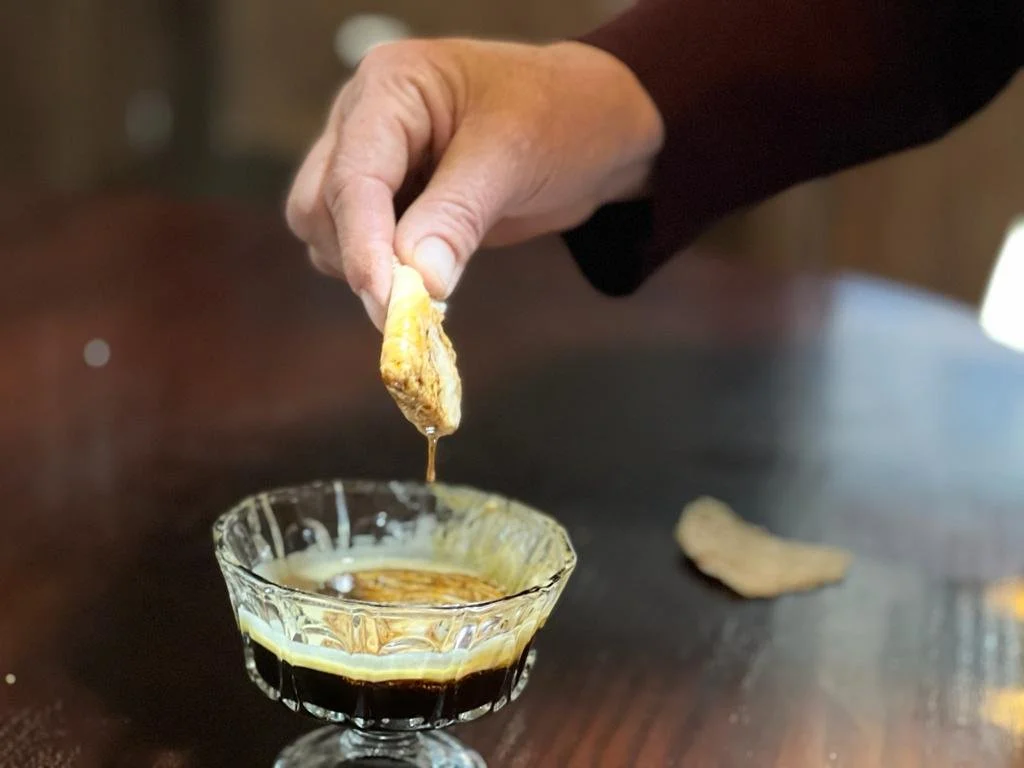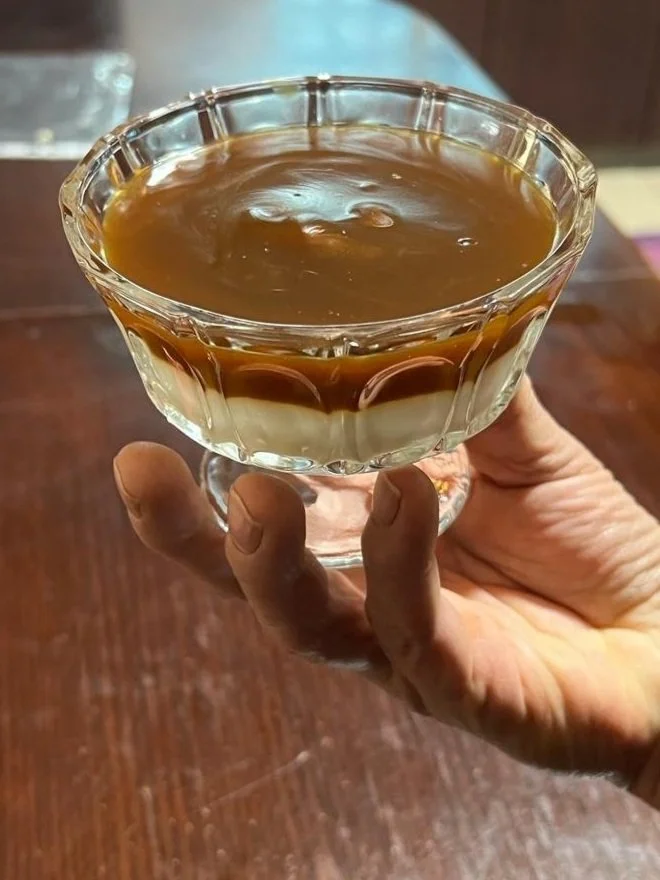Khalili ya Enab – From Hebron, These Grapes
Words by Hamza Albakri.
Whether you are walking by the golden sunset of Gaza beaches, seeking shade under the beautiful arches of Nablus old city, being blown away by the magnificence of Akka’s walls, or craving something sweet but watery to eat in the hot summer days of August, you will always hear the street vendors calling "خليلي يا عنب" (Khalili ya Enab – From Hebron, these grapes) followed by "زي العسل هالعنب" (Zy Al-Asal Hal-Enab – sweet as honey, these grapes).
Grape season is a festival in Hebron, Palestine. It starts when the grapevines bloom, announcing spring's arrival. As kids, we would run up to our parents, shouting "Nawar Al-Enab". In Palestine, we use terms such as “glowing” or “illuminating” instead of “blooming”, used to announce the arrival of the warm, radiating sun and look forward to it nourishing the upcoming months. We would wait impatiently for its leaves and tendrils to grow, as this signalled their readiness to roll, eat, and taste their acidity.
In our tradition, as with many other indigenous traditions and cultures, looking after plants and trees is an intimate relationship that grounds, roots, and connects us to our land. We would accompany the grape vines on their ripening journey as we grew with the land, too. I remember that one of the first times I was exposed to learning about care and tenderness was from observing the way my father removed grapevine leaves. A process we call “tawreeq” (leaf removal) in Arabic. Once, I followed my father from one tree to another to learn how the procedure was done. Standing behind him, he found a cluster of sour grapes stuck between the branches and the iron wires on which the vines climbed. He removed some of the leaves and cut tiny branches slowly and carefully, creating just enough space to free them. Once he figured it out, he rested the bunch on the back of his hand as gently as he would handle a new-born child. He moved it from one side of the wire to the other, allowing it to hang loose for the first time. Witnessing this magical moment allowed me to understand my dad’s capacity for softness.
“In late September, after a summer of shared breakfasts eating grapes with bread and gifting some to our loved ones across Palestine and Jordan, as the last figs dropped, plumes of smoke would rise, announcing the start of the intimate process of preserving grapes through the process of making dibs (molasses).”
In late September, after a summer of shared breakfasts eating grapes with bread and gifting some to our loved ones across Palestine and Jordan, as the last figs dropped, plumes of smoke would rise, announcing the start of the intimate process of preserving grapes through the process of making dibs (molasses). The beauty of such rituals is their power to gather people to celebrate the end of the season and appreciate the ways in which they could survive the cold winter. Aunts, uncles, cousins, and grandparents would all come together to help.
We’d begin this process by stomping on the washed grapes to extract the fruit’s juice, usually in a special trough. To separate solids and purify the grape juice, we use "hiwar," a natural, calcium carbonate-rich limestone powder. Then, we boil the liquid once and give it time to rest for four to six hours in order to allow the sediments to sink.
The juice is then poured into a huge cauldron called “dist” through burlap bags and cooked over a slow-burning wood fire. After roughly three-quarters of the way in, the bubbles on the surface would slowly begin to swell and become glossy, like “the eye of a camel” as my grandmother would describe it. Seven or eight hours later, the grape liquid will have turned into golden syrup. My mother and father would check the doneness of the molasses by pouring a small amount onto a small plate and dragging the handle of a spoon through it. If it sticks, the syrup is ready. Despite how simple the latter sounds, my parents would always argue and blame each other if the dibs was too runny or too thick.
After two long days of intense work and when the dibs had time to cool down, my grandmother, A’isha would go from one pot to another, sampling the dibs from each batch with her finger to taste them. We would all stand there, waiting nervously for the final verdict. Is it as good as it should be? Could it be too thick? Is it as sweet as honey? Slowly, her face stretches into a smile as she blesses both us and the dibs with: “Mashallah, sweeter than honey! May it be a blessed season for all of us.”
Each morning during the winter, we would eat dibs stirred with tahini to warm our bodies and gather energy for the day. In the evening, my mom would prepare a simple but very delicious dessert called “hamra wa beida” (red and white). It consists of milk mixed with starch and rosewater for the first layer and dibs mixed with a pinch of water for the second layer. The molasses is also used for cooking Palestinian dishes and dressing fresh salads. It is stored in a cool pantry and keeps until the following year, sometimes longer.
Recently, many people in our family have stopped investing time in the dibs-making process for a few reasons. Due to the colonial Palestinian Authority's neoliberal model imposed on Palestinians, purchasing dibs straight from supermarket shelves for immediate consumption quickly gained popularity. In many settings, you would hear Hebronites asking us: “Why would you burden yourselves with all of this backbreaking work when you could easily get dibs, malban, and raisins from any store?” It is a question that fills me with alarming concern. As I look around our land, seeing the settlers crawling and surrounding us by constructing massive concrete forests on our grape fields, I rhetorically ask back, ”Why?”
“Preserving such intergenerational traditions is a way to reaffirm our grandparents' hope for a liberated and autonomous future for Palestine and its people through the integrity of our traditions and culture.”
Like many other Palestinian land practices, dibs-making is one of many ways our land continues to teach us life. Moving my body and stomping on grapes the same way my grandmother used to move hers is a manifestation of our existence that is not confined to colonial time and space. Preserving such intergenerational traditions is a way to reaffirm our grandparents' hope for a liberated and autonomous future for Palestine and its people through the integrity of our traditions and culture.


